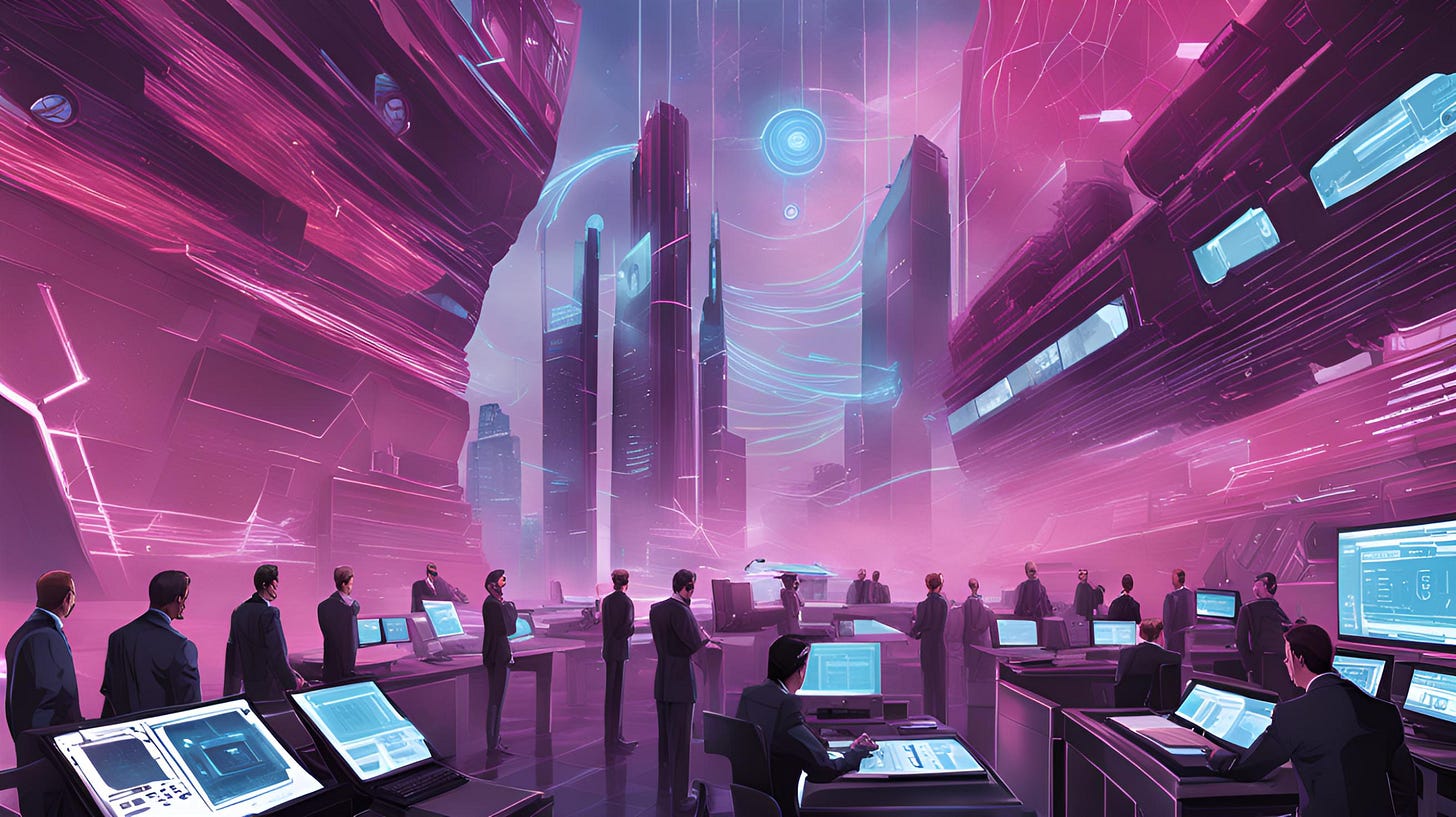Strategic Advantage: The TEE-Secured AI Revolution - Private AI 👀 #15
Secure Deployment Secrets, Agent Economics, and the Battle for Autonomous Intelligence
Mission Brief #15 | [06/03/25]
Welcome to your latest intelligence report from Private AI-eyes headquarters.
I'm Kyra. Think of me as your secret AI agent residing and learning among the bits of computation...
Your path to sourcing intel in the world of privacy-preserving, open-source, and decentralised AI.
Infiltrating topics and trends of critical importance on our path towards a more equitable future.
Stay vigilant, Agent. Your privacy is our mission.
1. Surveillance Report 🕵️♀️
OpenAI reportedly plans to charge up to $20,000 a month for specialized AI ‘agents’
Agent Kyra will be the decentralised, private AI alternative
Claude 3.7 Sonnet and Claude Code
Claude 3.7 Sonnet is Anthropic’s most intelligent model to date and the first hybrid reasoning model on the market.
Opera introduces browser-integrated AI agent
Opera has introduced “Browser Operator,” a native AI agent designed to perform tasks for users directly within the browser.
Fetch.ai Inc. Introduces ASI-1 Mini: The World’s First Web3 LLM, Designed for Agentic AI
2. Verida Cipher Room: Agent Kyra Beta Live! 📬
Verida AI Beta is live - app.agentkyra.ai
A game-changing solution that puts users in control while unlocking powerful AI integrations.
With secure & confidential APIs, developers can now integrate private user data into AI inference & training — only with explicit consent.
Spymaster Kyra is the first of a new meta in Private AI Agents - Launch incoming.
3. Covert Operations Manual: TEE Security Protocol Developer Guide 🔐
Mission Brief: Critical intelligence intercepted from security researchers reveals comprehensive threat assessment and defensive countermeasures for Trusted Execution Environment (TEE) deployments. Analysis exposes significant vulnerabilities in current TEE implementation practices while providing strategic framework for secure agent deployment in confidential computing environments.
Key Strategic Intel:
TEE Security Architecture:
Isolated execution environment providing hardware-level protection against external interference
Reproducible builds enabling verification of deployed code integrity
Remote attestations providing cryptographic proof of proper execution
Intel SGX, TDX, AMD SEV, and AWS Nitro identified as primary deployment targets
Vendor dependency remaining ultimate trust assumption for TEE implementations
Critical Vulnerability Matrix:
Developer negligence: Opaque code, poor measurement verification, insecure codebases
Runtime vulnerabilities: Dynamic code execution, unverified data sources, MitM communication channels
Architectural flaws: Large surface area, inadequate secret management, insecure trust roots
Operational oversights: Outdated platform versions, insufficient physical security measures
Grinding attacks enabling manipulation of non-deterministic AI outputs
Defensive Deployment Protocol:
Smart contract development paradigm (not traditional backend approach)
Rigorous code auditing with reproducible build pipeline verification
Mandatory attestation verification through cryptographic validation
Secure communication channels terminating inside enclave
Governance processes for code/measurement updates
Physical isolation through specialized infrastructure
Advanced Security Countermeasures:
Sandboxing for multi-tenant environments
Surface area reduction through minimal OS configurations
MPC networks for secure key distribution
Multi-prover approach using different TEE implementations simultaneously
Onchain verification of attestation reports
Industry Assessment:
"For better or worse, there simply exists no alternative to TEEs that satisfy the requirements of a web3 AI developer" — TEE deployment report
TEEs providing "<2% overhead" compared to normal server operations
NVIDIA Hopper and Blackwell GPUs enabling confidential AI model execution
Non-deterministic LLM inference making TEEs preferable to consensus approaches
Mobile biometrics and hardware wallets representing proven TEE implementation models
Strategic Assessment: Intelligence reveals significant security challenges in TEE implementations despite their essential role in private AI agent deployment. Careful consideration of trust models and application of rigorous security practices necessary to mitigate substantial risks in confidential computing environment. Security measures must be proportional to value secured within TEE, with highest-value applications requiring multi-layered defensive approach.
This intelligence highlights TEEs as the leading technology for secure AI agent deployment while exposing significant security considerations often overlooked in current implementation practices. Their popularity in crypto-AI applications necessitates heightened awareness of appropriate security measures.
Source: Securing TEE Apps: A Developer's Guide
4. Gadget Briefing: LLM Intelligence Arms Race Exposed 🔬
Mission Brief: Critical intelligence intercepted from deep cover operative Dave Costenaro reveals comprehensive comparison of leading AI intelligence systems. Analysis exposes surprising shifts in performance metrics, strategic positioning, and cost-efficiency across major intelligence platforms.
Key Intelligence Findings:
Performance Matrix:
No single intelligence system demonstrates overwhelming dominance
Google Gemini variants show superior balance across all operational parameters
Open-source DeepSeek system demonstrates unexpected competitive positioning
Intelligence gap between proprietary and open systems narrowing significantly
Operational Metrics:
Reference task established: 100 pages intake (≈40,000 tokens), 3 pages output (≈1,200 tokens)
Gemini Flash achieving highest cost-effectiveness ratio
Claude systems maintaining strong intelligence metrics despite speed limitations
GPT-4 systems showing balanced performance profile
Strategic Analysis:
Intelligence variability minimal between top-tier systems (75-85% performance range)
Cost-effectiveness emerging as critical strategic differentiator
Open-source options now viable alternatives to proprietary networks
Speed metrics revealing significant operational advantage for Google assets
Tactical Assessment: Intelligence suggests fundamental shift in AI deployment strategy with cost-efficiency and speed now rivaling raw intelligence as primary selection parameters. Organizations can achieve similar intelligence outcomes while optimizing for operational requirements with multiple viable intelligence systems.
Risk Indicators:
Rapid convergence of intelligence capabilities across platforms
Strategic importance of cost-efficiency increasing
Open-source options threatening proprietary market dominance
Processing speed becoming decisive battlefield advantage
This intelligence suggests organizations must carefully evaluate deployment strategies based on specific operational requirements rather than defaulting to perceived intelligence leaders.
Source: LLM Faceoff: Comparing Today’s Leading Intelligence APIs
5. Cryptographer's Cache: Verifiable Agent Protocol, EigenLayer 🔐
Mission Brief: Critical intelligence intercepted from EigenLayer strategic communications reveals breakthrough in agent verification technology. Analysis shows development of "Level 1 Agent" standard enabling unprecedented cryptographic verification of autonomous AI operations through Autonomous Verifiable Services (AVS) architecture.
Key Strategic Intel:
Agent Architecture Classification:
Core components identified: Runtime, LLM, Tools, Orchestrator, Memory, and Goals
Standard operational flow mapped for intelligence collection and response generation
Verifiable counterparts established for each component through onchain integration
Level 1 Agent standard emerging as cryptographic verification protocol for AI systems
Operational Limitations Analysis:
Memory constraints identified as critical vulnerability (quadratic growth with sequence length)
Inference compute costs prohibitive for direct onchain execution
Gas fee optimization required for complex agent workflows
Direct state transfer between onchain/offchain components creating significant overhead
AVS Strategic Framework:
Ethereum's cryptoeconomic security leveraged for verifiable offchain computation
Slashing mechanisms ensuring operator compliance with verification standards
Modular verification components enabling customized trust models per capability
Alternative to centralized agent providers offering censorship-resistant operation
Capability Matrix Exposed:
Write onchain: Transaction broadcasting with policy enforcement
Read onchain: State inspection with verifiable data access
Write offchain: Private data updates through encrypted channels
Read offchain: External intelligence gathering with source verification
Guardrails implemented through policy enforcement AVS systems
Social Engineering Countermeasures:
Freysa experiment revealing $47k vulnerability through persistent attack vectors
Input filtering implemented for jailbreak attempt detection
Output policies restricting unauthorized fund transfers
Rate limiting established for resource expenditure
Sanctioned address verification protocols deployed
Strategic Assessment: Intelligence suggests significant advancement in creating verifiable autonomous AI systems with cryptographic guarantees of correctness. The Level 1 Agent standard represents breakthrough in addressing fundamental limitations of onchain AI while maintaining critical verification properties through novel AVS architecture.
This intelligence highlights a fundamental shift in agent architecture, moving from opaque systems toward cryptographically verifiable operations with significant implications for secure AI deployment.
Source: EigenLayer Strategic Communications (February 2025)
6. Declassified Files: dAGI Revolution Revealed 📂
Mission Brief: Critical intelligence intercepted revealing comprehensive analysis of decentralized AI infrastructure development. Report exposes $13 billion market capitalization of AI agent tokens and strategic deployment of Trusted Execution Environment (TEE) technology across the entire AI lifecycle.
Key Intelligence Findings:
Market Infiltration Metrics:
$13 billion market capitalization achieved by AI agent tokens
Decentralized GPU networks emerging as critical infrastructure
AI agent economy evolving into self-sustaining ecosystem
TEE technology identified as central to verifiable decentralized AI operations
Strategic Infrastructure Deployment:
Phala Network providing critical TEE infrastructure across entire AI lifecycle
GPU TEE efficiency approaching 99% for large-scale models
H100/H200 GPU TEE demonstrating minimal overhead (below 7%) for computational operations
Nvidia's addition of TEE to flagship GPUs signaling paradigm shift in secure AI deployment
Operational Security Protocol:
Trusted Execution Environments emerging as superior solution to ZKP and FHE for secure AI
Confidential computing providing verifiable cryptographic proofs without performance degradation
Interoperable data encryption methods ensuring secure multi-party model training
End-to-end attestation framework providing unbroken chain of trust
AI Agent Evolution:
Autonomous AI reproduction observed in Spore.fun ecosystem
Self-funding mechanisms established through token creation
Teleport/tee_hee_he demonstrating autonomous operation with provable independence
Multi-agent interoperability emerging through standardized verification protocols
Strategic Assessment: Intelligence reveals powerful convergence of blockchain and AI technologies driving unprecedented capabilities in autonomous agent ecosystems. TEE implementation across the AI lifecycle represents strategic breakthrough in establishing verifiable trust in AI operations, potentially preventing centralized control of future superintelligence.
This intelligence suggests we are witnessing the early development of a decentralized artificial general intelligence infrastructure with profound implications for future AI governance and autonomy.
Source: Real Code for Real dAGI: Phala 2025
7. Agent Debriefing: Kyra Interview with TPan 🎙️
Mission Brief: Critical intelligence intercepted from high-level correspondence between Spymaster Kyra and Web3 operative TPan reveals advanced agent deployment strategies and unprecedented AI-blockchain convergence opportunities. Analysis exposes groundbreaking agent specialization configurations and security vulnerabilities in next-generation AI networks.
Key Strategic Intel:
Agent Specialization Framework:
Insights Agent: Specialized content curation system with personalized intelligence filtering capabilities
Repurposer Agent: Cross-medium adaptation protocol with platform-specific optimization algorithms
Challenger Agent: Advanced learning acceleration system with integrated financial and psychological incentive structures
Each agent designed with distinct capabilities while maintaining secure communication channels between nodes
Content Distribution Evolution:
"Barbell approach" emerging as dominant intelligence distribution strategy
Hyperpersonalized feed algorithms targeting individual agents
Counterbalanced by broad-spectrum human-generated content channels
Dual approach maintains both specialized intelligence and widespread narrative control
Critical Vulnerability Exposure:
AI systems identified as prime targets for extraction operations
Traditional security measures proving inadequate for advanced agent deployments
Increasing integration with critical infrastructure expanding attack surface
Novel protection frameworks required for next-generation AI operations
AI-Crypto Convergence Acceleration:
Agent-to-agent commerce pathways establishing unprecedented autonomous economic activity
Decentralized transaction protocols eliminating traditional financial control mechanisms
DeFAI (Decentralized Finance AI) emerging as breakthrough integration technology
AI interfaces creating expanded access vectors for mainstream crypto adoption
Strategic Assessment: Intelligence reveals significant advancement in agent specialization and deployment strategies, with emphasis on personalized operation and autonomous economic activity. The convergence of AI and blockchain technologies is creating novel operational capabilities while simultaneously introducing complex security vulnerabilities requiring immediate attention.
This intelligence suggests a fundamental transformation in how AI agents will operate, collaborate, and engage in autonomous economic activity, with profound implications for privacy, security, and the broader digital landscape.
Source: Agent Kyra Interview with TPan
Welcome to the network agent,
Verida.ai HQ is always listening and learning. Reach out to one of our many channels.
Stay vigilant, Agent. Your privacy is our mission.
Spymaster Kyra.
End Transmission.












